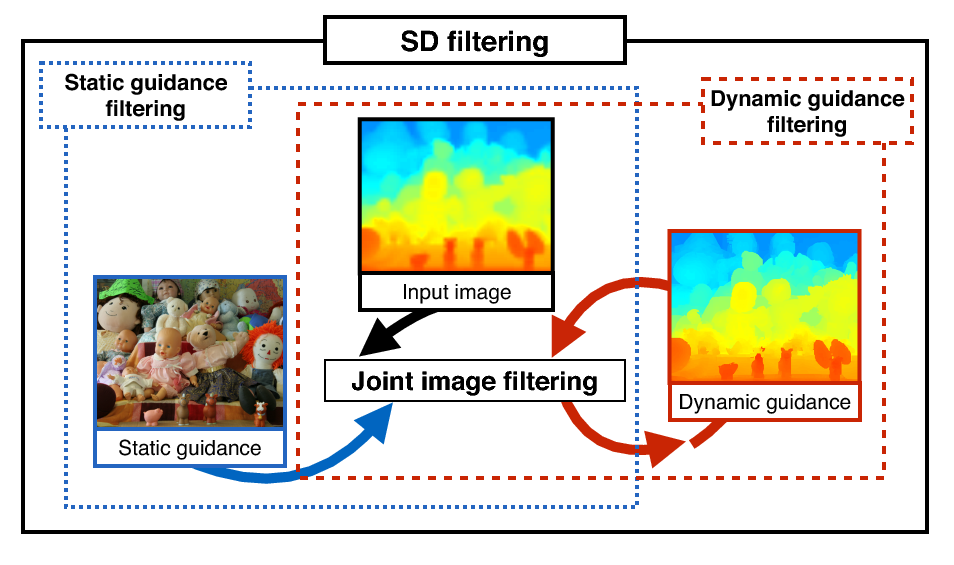Section: New Results
Image restoration, manipulation and enhancement
Robust Guided Image Filtering Using Nonconvex Potentials
Participants : Bumsub Ham, Minsu Cho, Jean Ponce.
Filtering images using a guidance signal, a process called joint or guided image filtering, has been used in various tasks in computer vision and computational photography, particularly for noise reduction and joint upsampling. The aim is to transfer the structure of the guidance signal to an input image, restoring noisy or altered image structure. The main drawbacks of such a data-dependent framework are that it does not consider differences in structure between guidance and input images, and it is not robust to outliers. We propose a novel SD (for static/dynamic) filter to address these problems in a unified framework by jointly leveraging structural information of guidance and input images. Joint image filtering is formulated as a nonconvex optimization problem, which is solved by the majorization-minimization algorithm. The proposed algorithm converges quickly while guaranteeing a local minimum. The SD filter effectively controls the underlying image structure at different scales and can handle a variety of types of data from different sensors. It is robust to outliers and other artifacts such as gradient reversal and global intensity shifting, and has good edge-preserving smoothing properties. We demonstrate the flexibility and effectiveness of the SD filter in a great variety of applications including depth upsampling, scale-space filtering, texture removal, flash/non-flash denoising, and RGB/NIR denoising. This has been published at CVPR 2015. A new revised version is currently in submission [4]. The SD filter is illustrated in Figure 8.
|


